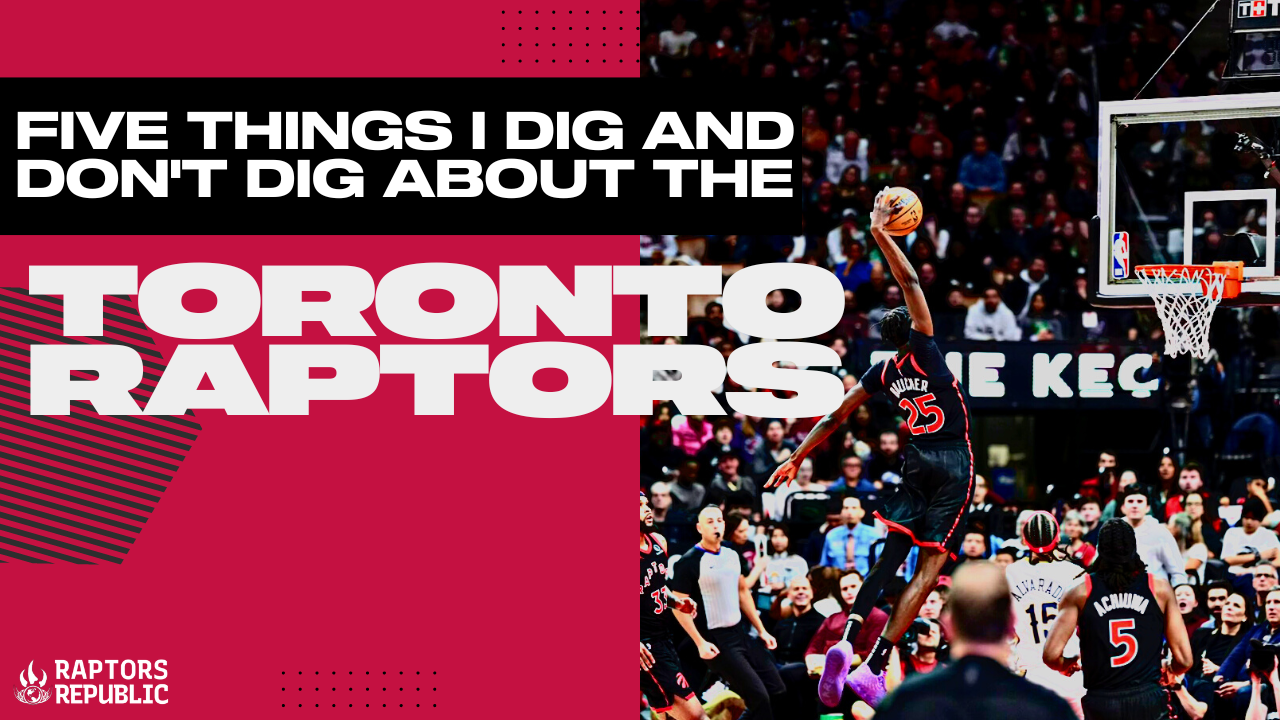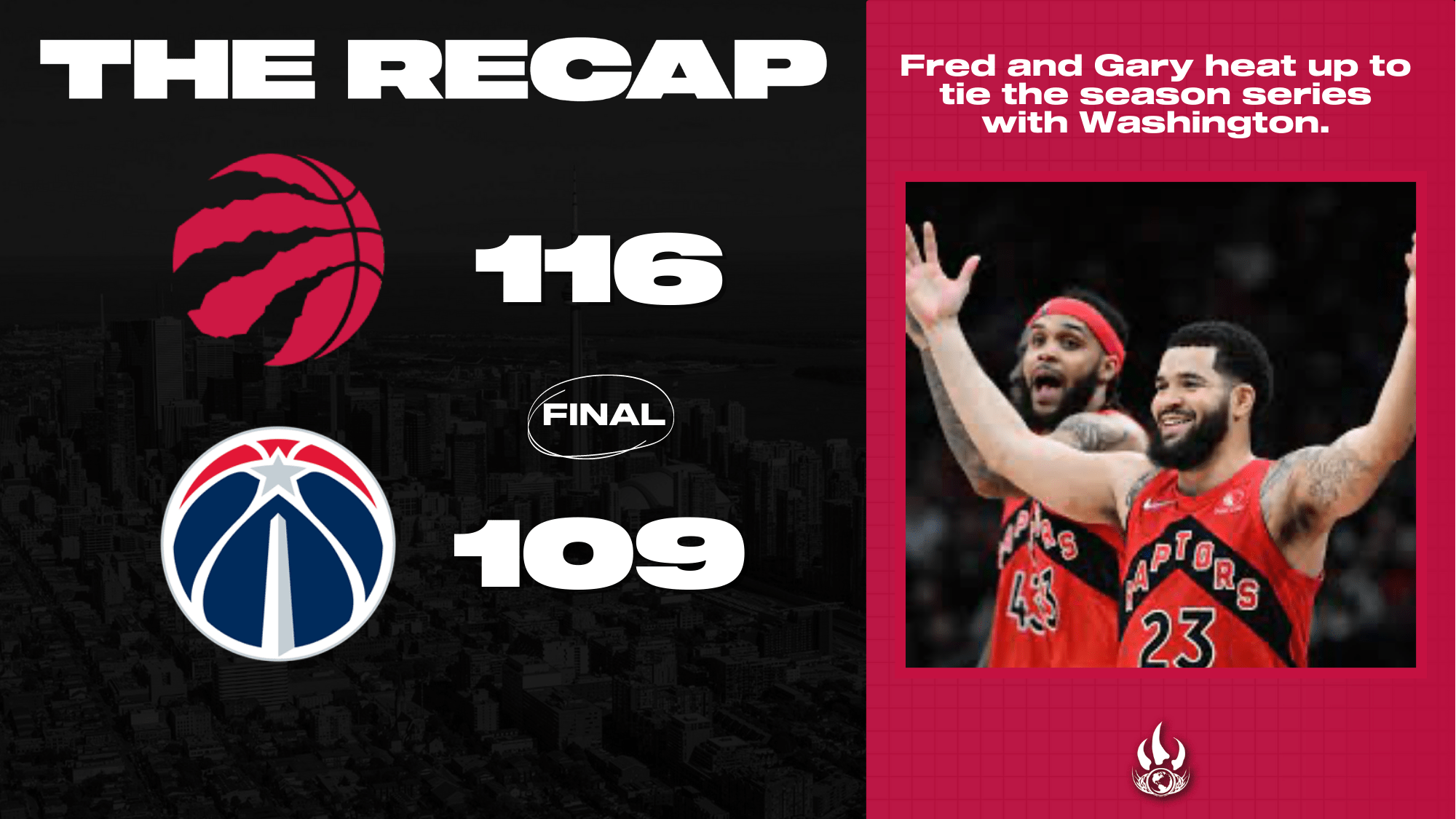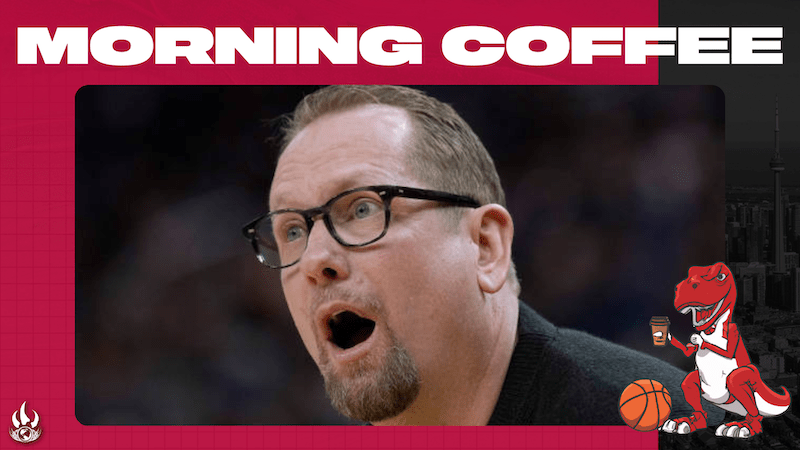Editor’s note: The stats in this piece do not include the game played on Saturday March 4.
1. Pascal Trey Bombs
The final piece to Pascal Siakam’s All-NBA profile is three-point shooting.
Akin to former teammate, DeMar DeRozan, Pascal – though, without the distaste for it like DDR – prefers to operate within the arc than above it. Not for lack of desire, but of consistency. The three, surprise, surprise, a major flaw to his otherwise spectacular game.
Signs of progression were there. In 2020-21, Pascal shot 30% on 4 attempts a game. Last year, 34% on 3 attempts. This year, 34%, again, but back to 4 attempts. Solid. Not enough.
Until February.
Read more: Five Things I Dig and Don’t Dig About the Toronto RaptorsAs of February 1st, Pascal was shooting a miserable 30% from three and 33% on catch-and-shoots. That night, against Utah, Pascal didn’t attempt a single three in 39 minutes. Red flag central.
But something must’ve happened that night: a slap on the bum; few words of encouragement/admonishment; an overnight Shooting Fairy dust sprinkling. Something.
Cause since then, Pascal has shot 44% on 4 attempts a game and 46% on catch-and-shoot threes. It’s a 12-game sample size. Enough to be dismissed as a hot-streak, but should it suggest any sort of trend – even with a regression to 39-40% – it’ll be a major breakthrough.
Hitting more catch-and-shoot threes – the majority of Pascal’s three-point diet – and any pull-ups at all (he’s at 44% per game on one pull-up 3 per game during the streak) opens ample for both him and his teammates. Defenders on- and off-ball must honour the threat: more spacing cleared for others; less spacing cheated from Pascal with the ball in his hands.
Since that zilch of a night in Utah, Toronto has been 9-3. In the last two games, Toronto is 1-1 and Pascal 2/10 from three.
Coincidence? I think not.
2. Jak + Roll
Since returning to Toronto, Jakob Pöltl has been everything Masai and Bobby could have hoped for and then some. Especially, as a scorer and passer, which I doubt even the most zealous supporters of the trade deadline acquisition anticipated.
In the pick-and-roll, Jakob has devastated teams. Before, the Raptors used a lot of Pascal and Scottie as screeners for Freddy, relying on their scoring and passing versatility to make up for their lack of size. Precious, too, was used, but without a clear path to the hoop, on the ground or in the air, he was limited in his effectiveness.
Jak, on the other hand, with his utter size and mass creates immense space. His screens crush defenders.
Killian Hayes, a great on-ball defender, is completely ensnared by Jak’s screen.
And his rolls plow the lane like a boulder chasing Indiana Jones. Once at the rim, Jak’s footwork and hands allow for a diversity of finishes. Like a smooth lay-up.
Or with control, strength, and power.
Or with a soft floater.
The Raptors have not experienced such certainty at the rim since Kawhi Leonard. Jak’s shot 79% at five feet or less from there since being in Toronto again.
The Raptor creators are seeing the benefit too. The majority of Pöltl’s 51 field goals have come from Freddy (14 assists), Scottie (10), and Pascal (8). With his effectiveness as a roller, the ballhandlers are afforded more time and space, and less attention, to operate.
Every team needs a go-to play or two to get themselves out of a funk. Against Washington, on Thursday, things were getting a bit stagnant in the 3rd quarter. Raptors were down 15 with about 4 minutes to go. To shake it up, Freddy and Jak ran five straight pick-and-rolls: Jak bucket, Jak bucket, Jak fouled, Boucher bucket on a kick-out, and Freddy missed a floater.
4/5 is pretttttty pretttty good.
3. Jak + Pascal
We, mostly, all thought surrounding Pascal with shooters was the necessary next step to optimizing his game. That’s still true, but…
We may not have considered how much a large, tall, coordinated, selfless big man would also catalyze Pascal’s game.
And not how you think. While it shouldn’t be any surprise that Jak has become one of Pascal’s favourite targets (since the trade Pascal’s most assists have gone to Pöltl [8], Gary [7], Scottie [7], and Freddy [7]), it’s Pascal becoming one of Jak’s favourite targets that was, perhaps, less expected.
Jak has a grand total of 20 assists as a Raptor – 8 of those going to Pascal: 2 from the low post and 6 from the high post.
Samson Folk provides an excellent breakdown as to how and why the Raptors have used Jak in the high post to alleviate pressure placed upon Pascal. In both plays profiled, Pascal is denied by Pistons guards. No problem. Jak gets the ball, and Pascal backdoors the smaller defender.
Pascal’s isolation dominance detracts our attention from his off-ball acumen. It’s also what makes Pascal all the more threatening. A bigger guy, Pascal cuts past them. A smaller dude, seal’em and deal’em. And while Scottie has been great at finding Pascal in these mismatches, Pöltl’s height and deference makes him a more effective passer in the high post.
That’s over two(!) 7-footers, folks. Evan Mobley drops back on Pöltl knowing Pöltl is no shooting threat and Jarrett Allen is mismatched against Pascal nearby on the perimeter. Pascal one-steps towards Pöltl and Zhoop ducks behind Allen. No Raptor – not even Scottie – could have lofted such a ball over the spaghetti arms of Mobley and a retreating Allen. A perfect plop into a layup.
Similarly, when Pascal finds a lesser opponent, he’s quick to create space. Pöltl obliges swiftly.
These types of plays are what make basketball simple and a delight. Watching guys play in ways we assume they’re less likely to do (a ball dominant scorer cutting) or capable of (a defensively-minded big making delicate deliveries) gives us fans a lovely dose of dopamine.
For the Raptors, who so often make half-court scoring look like a chore, these plays give them an effective way to find quick and easy scores.
4. O.G. at the Rim
To be fair, the last few months have been tough for O.G.. As they would for any player.
Since the offseason, trade rumours and O.G.’s alleged disgruntlement have been the Talk of the Town. Even after the trade deadline, rumours abound on what was offered – and refused – for his services. To boot, O.G. took a tremendous fall on to his wrist, after, finally, finding a rhythm again and missed 9 games.
Things have not been great since coming back. Forgivable, too. Fitness, rust, confidence, lingering pain (his wrist clearly bothers him still). All factors for players returning from injury.
But poor O.G., the regression has been pronounced. I hold so much optimism for him. I celebrated his two-point finishing progression earlier this year. It seemed a corner was being turned.
That corner is wider than I thought. O.G. returning to his old, cumbersome ways. Since January 1st, O.G. is shooting 49% on shots 5 feet or less from the rim. Prior, it was 65%.
It’s all the same old stuff with O.G. His gathers are exposed and bulky; his balance rickety; he attacks without a plan and ventures hostile areas ill-prepared for impending shot blockers.
Here, for example, O.G. posts up against Kristaps Porzingis.
Several errors. O.G. fails to make enough contact with Zinger to get him on his back feet. He also pivots backwards – possibly to regain his balance – giving up positioning and lacking the power to rise up into the block attempt.
When O.G. does manage to make contact, it’s heavy-handed, to the say the least. I do think Refs give O.G. way too hard of a time, but a charge a game from O.G. is standard nowadays. He’s a precocious superhero who doesn’t know his own strength. Or, at least, lacks the tact to camouflage it.
This one against DeRozan one of the more recent transgressions.
O.G. finally broke out with 26 points against Washington. Still, Toronto needs more consistency from O.G., particularly, at the rim. He’s too spry, too powerful, too terrifying downhill, to be that poor of a finisher.
The fatal flaws are both decision-making and balance. A lack of both being the causes of so many of his bobbles, bumbles, missteps, blocked shots, and blown layups. The following a good example.
O.G. anticipates Zinger to stand his ground. Which, if you ask me, is still not a reason to barrel forward. O.G., barrels nonetheless and misses Zinger’s body. As a result, O.G. is further in the paint and under the basket than he expected, forcing a more awkward huck at the hoop. A thoughtful, balanced drive would have involved a pro-hop. Or a spin. Or a floater. Or a Euro-step. Anything dynamic.
I’m not out on O.G.. Corners can be turned, rerouted, turned again, detoured, and turned once more. Still, this has been a challenge of his since entering the league and one that has persisted for much too long now.
5. Will Barton Signing – To Like or Dislike
To Like:
The Raptors were desperate for any consistent semblance of scoring, shooting, attacking from a guard.
Once upon a time, Barton was known as a bucket-getting spark plug. In Denver, he averaged roughly 15 points and 3 assists on 50% effective field goal shooting and was able to score on top defenders.
This year, despite a clear regression in his game, Barton still shot 38% on 3.5 three-point shots per game. The Raptors look ravenously at such numbers.
Additionally, Barton’s an experienced veteran. Unlike, Armoni Brooks last year, for example, he’s competed against elite players in high-leverage situations. Should Barton be thrown out there randomly in the middle of a tight game, he won’t shy away from the situation.
To Dislike:
The idea of Barton is a fine one. A 9th guy who can shoot and create for himself.
Problem is that idea of Barton may no longer exist. The Nuggets couldn’t wait to unload him. The Wizards, despite injuries to most of their guards, rarely used him. And, in the scramble for buyouts, none turned their eye towards him.
Barton also fits the exact opposite profile of a Nick Nurse rotation guy. He plays little defence and has a penchant for chucking.
On top of that, and most troubling to me, is the likelihood of Barton cannibalizing Jeff Dowtin Jr.’s minutes. Fans have begged for Dowtin time for a while now. Nurse refused, opting for Malachi Flynn or nobody instead.
With Freddy tending to a third newborn, Dowtin finally got the greenlight – ahead of Malachi – and played solid. The raw numbers are what they are: 19 minutes | 5 points | 2 assists | 1 turnover | 50% effective field goal | -10 net rating.
Still, Dowtin gave Toronto what it needed from a back-up point guard. His poise and cadence reminiscent of a veteran backcourt commander.
Dowtin understands when to accelerate and decelerate the team. When to attack and dish or when to defer and get the ball to the scorer. Sounds simple, but Toronto has a swack of dudes – Flynn and, now, Barton included – who’s first inclination is to score or create. The team sometimes looking like it’s lining up single file at the green light.
Throughout the season, in spot minutes, Dowtin remained conservative relying on his strength in ball control – as a director of traffic and a distributor – and court vision. Finding others to give the ball and finding space to receive it.
But as Dowtin became more comfortable – TAKE NOTES, COACHES, ON LETTING US DEPTH GUYS FIGURE IT OUT – he looked to attack as he so successfully demonstrated at the G-League level.
Most importantly, Dowtin gave this team some oomph on perimeter defence. He loves to pick up full court and harangue ball handlers. He’s smart, lithe, great positionally, and despite his frame doesn’t give up space easily. Barton cannot claim the same.
Since joining, Barton has played 11 minutes and, is 0/3 and a minus 14. Dowtin has two straight DNP’s.
Kinda what I was worried about.



